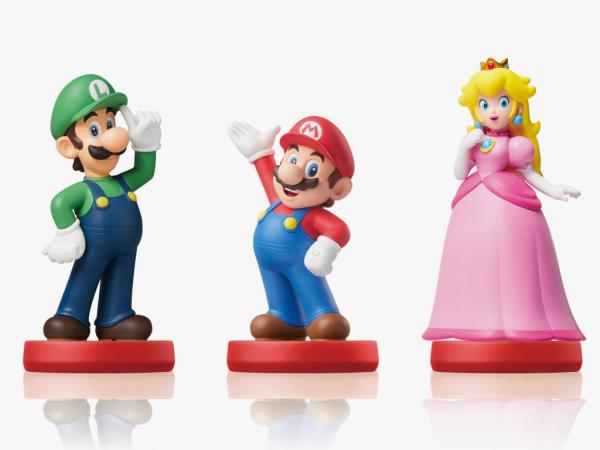Whether it’s growing, shrinking, or taking on a whole new form, technology saw some huge releases in 2015, alongside announcements like the Microsoft HoloLens. While devices like the Apple Watch drew new attention to wearable technology, especially given how a recent report estimates that 39.5 million U.S. adults use some form of wearable tech in this year alone, while other devices gave us an all-new way to see reality.
Here are some of the devices released in 2015 that left the deepest marketing impressions.
Apple Watch
Apple has a unique talent for taking often overlooked consumer technologies and turning them into gold. That can be taken almost literally when it comes luxury editions of the Apple Watch, which features an 18-Karat gold case and a $10,000 starting price. Although rival companies already  had their own brands of smart watches when the Apple Watch was first announced, there was a lot of hope that Apple would turn the technology into a success with features like 3D touch, Apple Pay, the ability to run apps, and connectivity with other Apple devices.
Although fitness and health monitoring were discussed as major points during keynote presentations, the Apple Watch was marketed largely as a fashion accessory instead of putting too much focus on the technology. There is even a issue of Vogue with a 12-page spread detailing the different body and band combinations and styles. Meanwhile, its promotional videos illustrate how the Apple Watch is the perfect accessory for a variety of everyday activities.
Surface Pro 4 and Surface Book
Microsoft’s Surface tablets have gone a long way toward bridging the gap between the portability of tablets and the power of notebook computers. While past efforts to promote Surface systems played up the differences between it and MacBook computers, Microsoft decided to shift its approach to appeal to high-end tech users with a message of being creative and bold.
Last October’s reveal of the Surface Pro 4, with more powerful hardware and better usability, came as welcome (although not unexpected) announcement during a press event. However, it was followed by an announcement that took audiences completely by surprise. Microsoft introduced its very first laptop computer line with the Surface Book, a 2-in-1 notebook computer with a removable screen. The screen can operate independently as a high-end, large screen, tablet. Its gorgeous look, technology, and capabilities were enough to build up hype for the computer, despite its relatively high price point and pre-orders began selling out within 5 days of its announcement.Â
iPad Pro
Apple’s Tim Cook once famously compared convertible tablets to converging a toaster with a refrigerator, and Microsoft had a little fun with that statement before the announcement of its new Surface lineup, given how the iPad Pro was announced a month earlier.
@maryjofoley, @alex, @thurrott, @tomwarren hope you enjoy the show today…pay attention – some new things might pop up pic.twitter.com/yHbgfLNyfN
— Terry Myerson (@tmyerson) October 6, 2015
Â
Given how the iPad Pro is actually a gigantic iPad that runs iOS, Cook doesn’t really contradict himself by releasing it. Although it is a sort of admission that Apple recognizes that there is a market for large-screen portable devices to further bridge the gap between tablets and notebooks. Apple’s marketing approach so far is to help capture its enormity with imagery from outer space, like the planets Jupiter and Saturn, rendered in spectacular color.
Samsung Gear VR
2016 will be the year that high-end virtual reality headsets like the Oculus Rift and HTC Vive release, but the Samsung Gear VR is the virtual reality device for today. Officially releasing last November, the Gear VR uses principles similar to Google Cardboard, where you use a mobile phone to drive 360-degree viewing experiences like movies, videos and games.
Although some might consider mobile VR as a stepping stone to more advanced experiences, its low price and portability make it attractive to many users, giving it the potential to become more popular than the high-end sets. Content partners like Netflix recognize this potential, as it paves the way for the VR era, and have been quick to take advantage. Samsung itself has been releasing exclusive content to draw more users to its camp, like the LeBron James “Striving for Greatness” VR video, which gives viewers an in-depth look at the player’s training process.
iPhone 6s
The iPhone “S” series has traditionally been regarded by tech enthusiasts as an “in-between” model that fills in gap between major iPhone releases. Apple recognizes this, and decided to use this perception to drive its marketing. Commercials emphasize how spectacular the new and improved features like 3D Touch Siri are. Of course, it also helps to have a few celebrities like Selena Gomez and Jamie Foxx show off using the iPhone 6s. So, what’s different about the new iPhone 6s Not much. Except… all this.
Amiibo
Although Nintendo saw languishing sales with its Wii U gaming console system, the company struck oil this year with the release of Amiibo – figurines based on Nintendo’s vast library of characters that can interact electronically with games via built-in NFC (Near Field Communications) chips. The company’s long-standing fan base went wild for them, and they quickly sold out. While each figurine costs about $15, some have sold at auction for over $100.
Despite how video-game related figures, like Skylanders, have been around for quite some time, Amiibo are the first to officially feature Nintendo’s lineup of characters. As a result, fans were lining up and camping outside stores to snatch up rare ones. Although much of the Amiibo marketing focuses on how they interact with games, its functionality has practically become secondary to simply collecting them. Whatever the reason for their success, it’s clear that Amiibo are here to stay, and if the cross-over partnership with Skylanders Superchargers is an indication of anything, it’s that there will be a lot more to come.


